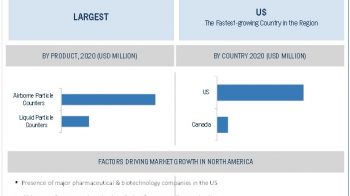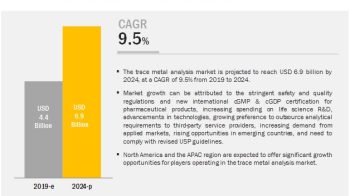What This Study is All About:
The study involved four major activities in estimating the current market size for the Air Quality Monitoring Research Market. Exhaustive secondary research was done to collect information on the market and its different subsegments.
The next step was to validate these findings, assumptions, and sizing with industry experts across the value chain through primary research. Both top-down and bottom-up approaches were employed to estimate the complete market size. After that, market breakdown and data triangulation procedures were used to estimate the market size of segments and subsegments.
The global air quality monitoring system market (AQMS) is expected to reach USD 6.0 billion by 2025 from USD 4.3 billion in 2019, at a CAGR of 5.6%.
The major factors driving the growth of the air quality monitoring system market include the supportive government regulations for effective air pollution monitoring and control, ongoing initiatives towards the development of environment-friendly industries, increasing public-private funding for effective air pollution monitoring, rising levels of air pollution, and increasing public awareness related to the environmental and healthcare implications of air pollution.
Download PDF Brochure@
https://www.marketsandmarkets.com/pdfdownloadNew.asp?id=183784537
The indoor air quality monitors segment accounted for the largest share of the market in 2019
Based on the product, the Air Quality Monitoring Research Market is segmented into indoor monitors (comprising fixed and portable monitors), outdoor monitors (comprising fixed, portable, dust, and particulate monitors as well as AQM stations), and wearable monitors. The indoor monitors segment dominated the AQMS market in 2019. The large share of this segment is attributed to the increasing adoption of smart home and green-building technologies and growing consumer preference for pollution-free indoor environments.
Recent Developments:
# In March 2019, Thermo Fisher Scientific (US) launched the TriPlus 500 Gas Chromatography Headspace Autosampler.
# In February 2018, TSI (US) acquired 3M’s (US) Personal Safety Division, which includes offerings focused on noise, environmental, and heat stress monitoring. TSI also acquired 3M’s Oconomowoc, Wisconsin facility.
# In November 2017, Emerson (US) collaborated with Fluenta (Norway) to provide ultrasonic flare gas measurement solutions for the oil & gas and chemical industries. This collaboration was aimed at improving energy efficiency and compliance with regulations to monitor and report flare gas emissions across the globe.
Government agencies and academic institutes held the largest share of the AQMS market in 2019
Based on end-user, the air quality monitoring system market is segmented into government agencies and academic institutes, commercial and residential users, petrochemical industry, power generation plants, pharmaceutical industry, smart city authority, and other end users. The government agencies and academic institutes segment accounted for the largest share in 2018. The large share of this segment can be attributed to the presence of stringent environmental regulations, rising government investments for effective AQM, and increased installation of AQM stations worldwide.
Key Questions Addressed by the Report:
# What are the growth opportunities related to the adoption of AQMS products across major regions in the future?
# Emerging countries have immense opportunities for the growth and adoption of AQMS products. Will this scenario continue in the next five years?
# Where will all the advancements in products offered by various companies take the industry in the mid- to long-term?
# What are the new trends and advancements in the market?
Request Sample Pages@
https://www.marketsandmarkets.com/requestsampleNew.asp?id=183784537
Global Leaders:
The major players operating in the Air Quality Monitoring Research Market include Thermo Fisher Scientific (US), Emerson Electric (US), General Electric (US), Siemens AG (Germany), Teledyne Technologies (US), PerkinElmer, Inc. (US), Agilent Technologies, Inc. (US), Spectris plc (UK), 3M Company (US), Honeywell International Inc (US), HORIBA, Ltd. (Japan), Merck KGaA (Germany), TSI Incorporated (US), Tisch Environmental (US), and Testo (Germany), among others.
Analysis of the market developments between 2016 and 2019 revealed that several growth strategies such as product launches, enhancements, strategic acquisitions, agreements, partnerships, collaborations, and expansions were adopted by the market players to strengthen their product portfolios and maintain a competitive position in the air quality monitoring systems market. Among these business strategies, product launches, agreements, and partnerships were the most widely adopted growth strategies by the players in the air quality monitoring systems market.

